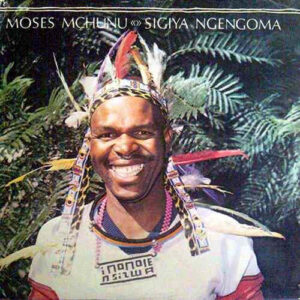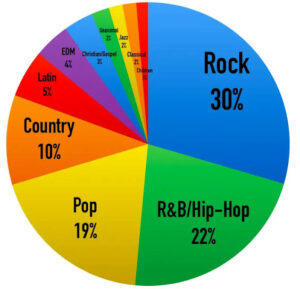
The origins of music in South Africa can be traced back to the early indigenous peoples of the region, such as the Khoisan and San. These groups used various forms of music, including vocal chants, clapping, and rhythmic dances, as integral parts of their cultural and spiritual practices.
With the arrival of European settlers in the 17th century, new musical influences began to shape the South African music scene. The Dutch brought with them European musical traditions, including choral music and hymns, which were adopted and adapted by local communities. Christian missionaries also played a significant role in introducing Western musical instruments, such as the guitar and piano, to South Africa.
In the 19th century, the influence of African-American music, particularly gospel and blues, began to emerge after the arrival of freed African-American slaves and the establishment of the African-American community in Cape Town. These influences, combined with traditional African music, resulted in the development of unique musical genres such as marabi and isicathamiya.
The 20th century saw the rise of various musical movements and genres in South Africa. Jazz became popular in urban areas, while marabi and kwela gained popularity in township communities. In the 1950s, the vibrant and energetic music style known as mbaqanga emerged, combining traditional African rhythms with Western instruments.
During the apartheid era, music played a significant role in promoting resistance and social change. Artists such as Miriam Makeba and Hugh Masekela became prominent voices against the oppressive regime, using their music and lyrics to spread messages of freedom and unity.
Since the end of apartheid in the 1990s, South African music has continued to evolve and diversify. Contemporary genres such as kwaito, a fusion of house music and traditional African rhythms, and gqom, a genre characterized by its heavy basslines, have gained popularity both domestically and internationally.
Today, South African music is a blend of diverse influences, reflecting the country’s multicultural heritage. It continues to be a powerful means of expression, cultural preservation, and celebration in South African society.
Pre-colonial era
During the pre-colonial era, music in South Africa was deeply rooted in the traditions and cultures of indigenous African communities. Each group had its own unique musical practices, instruments, and styles.
Indigenous South African music was primarily vocal, with singing and chanting being important elements. These vocal performances often incorporated complex rhythmic patterns and harmonies. Clapping, stomping, and body percussion were also utilized to create a rhythmic backdrop for the songs.
One of the notable features of pre-colonial South African music was the extensive use of traditional instruments. These instruments were made from various materials such as wood, animal skins, and plant fibers. Examples include the mbira, a thumb piano, the uhadi, a musical bow, and various percussion instruments like drums and rattles.
Music played a central role in traditional South African societies, serving purposes beyond mere entertainment. It was used in various social and ceremonial contexts, such as initiation rituals, hunting ceremonies, and spiritual practices. Music also served as a means of transmitting history, folklore, and cultural values from one generation to another.
Each indigenous group had its own distinct musical traditions. For instance, the Zulu people had their isicathamiya, a style of a cappella singing characterized by intricate harmonies and rhythmic foot stomping. The Xhosa people had their umngqokolo, a style known for its unique vocal techniques and melodies. The Sotho people had their lebollo, a style of dance music accompanied by various percussion instruments.
In addition to the rich musical traditions within individual communities, there was also a significant amount of cultural exchange and interaction between different African groups. This led to the blending and fusion of musical styles, resulting in the emergence of new forms and genres.
Overall, music in pre-colonial South Africa was a vibrant and integral part of daily life, serving as a means of expression, communication, and cultural identity for indigenous communities.
Influence of colonialism
Colonialism in South Africa had a profound impact on the music of the country. The arrival of European settlers and their subsequent rule brought new musical influences, instruments, and cultural practices that shaped the development of South African music.
One of the most significant influences of colonialism was the introduction of Western musical traditions. European settlers brought with them instruments such as the guitar, piano, and orchestral instruments, which were quickly adopted and adapted by local musicians. This integration of Western instruments contributed to the hybridization of South African music, blending indigenous rhythms and melodies with European harmonies and structures.
Christian missionaries also played a role in the spread of Western musical practices. They brought hymns and choral music, which were adopted by local communities and incorporated into indigenous musical traditions. This blending of Christian hymns and indigenous songs gave rise to unique musical genres such as African gospel and choir music.
Colonialism also brought contact with African-American musical traditions. With the arrival of freed African-American slaves, particularly in Cape Town, South Africa became exposed to the music of the African diaspora. African-American musical styles such as gospel and blues started to influence local musicians, leading to the emergence of new genres like marabi, a genre characterized by its syncopated rhythms and jazz influences.
However, colonialism also had negative effects on South African music. The imposition of colonial rule and policies such as apartheid resulted in the marginalization and suppression of indigenous musical practices. Traditional indigenous music was often denigrated and disregarded, and musicians were subject to discrimination and limited opportunities.
Despite these challenges, music became a tool for resistance during the apartheid era. Musicians like Miriam Makeba, Hugh Masekela, and Ladysmith Black Mambazo used their music to raise awareness and rally against the oppressive regime. Their songs became anthems of defiance and calls for equality.
In more recent years, post-colonial influences continue to shape South African music. Globalization and the accessibility of music from around the world have led to diverse musical collaborations and the incorporation of various genres and styles into South African music.
In summary, colonialism had both positive and negative impacts on South African music. It brought new musical influences and instruments, merging with indigenous traditions and contributing to the creation of unique genres. However, it also led to the marginalization of indigenous music and the imposition of colonial ideals on musical expression.
Rise of local genres





